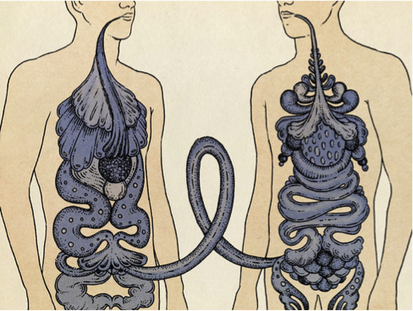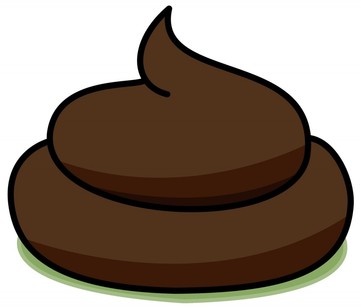|
by Haily Tran '16 
"This spring I saved a friend from a terrible illness, maybe even death. No, I didn’t donate a kidney or a piece of my lung. I did it with my stool." [image via]
We’re all familiar with the fibrous substance our bodies excrete on a regular basis. You probably don’t think twice about flushing it down the toilet. But, here’s a thought: human fecal matter has been used in more than 3,000 medical procedures around the world to cure various gastrointestinal illnesses. (1) Our digestive system is home to over 20,000 different species of good bacteria, most of which accompany our digested food waste out of the body (2). A sample of healthy human feces is the densest bacterial ecosystem in nature—trillions of strains versus the mere 30 found in the best probiotics (3). Fecal microbiota is a burgeoning field of research as more scientists look to Mother Nature for ingenious medical solutions rather than synthesizing them in a lab. Fecal microbiota transplantation (FMT) has emerged as a highly effective treatment for many gastrointestinal diseases that result from an overgrowth of a bad bacteria colony, Clostridium difficile, in the digestive system (4). Symptoms range from intense diarrhea and vomiting to internal bleeding. The conventional treatments are a high dosage of antibiotics, anti-inflammatories, immunosuppressant drugs, or steroids, all of which can have a negative impact on the body. Fecal matter, however, is a natural product that has no side effects—if the sample passes a thorough screening process. Some patients have reported feeling better almost immediately after the procedure (1). After a rigorous process to make sure that the donated specimen is free of other transmittable diseases, the actual transfer of fecal matter from donor to patient is quite simple. In fact, many patients just follow the doctor’s guidance and perform the procedure in the comfort of their own homes. First, the specimen is blended and strained soon after it leaves the donor’s body to minimize exposure to other infectious bacteria in the local environment. The clean sample is then administered to the upper gastrointestinal tract route (the cecum or ileum) via a nasogastric or nasoenteric tube through the rectum. If at home, the patient would perform the same procedure using a syringe to push the fecal solution through the rectum to the lower GI tract route (4). If you need a moment for that to sink in—“that” being the transfer of fresh feces from one person to another—take it. 
Ed: That's the last time I type "poop" into Google. [image via]
While it might be new to you, the practice of fecal transplant is nearly 2,000 years old. First documented in 4th century China, the use of fermented fecal solution, referred to as “yellow soup”, was a popular treatment throughout the 16th century for severe diarrhea, fever, pain, vomiting, and constipation (5). (I’ll leave the details to your imagination, but if you’re still interested, check out this letter in Nature.)
The growing interest in FMTs caught the FDA’s attention in early 2013. Soon after, the agency issued an official statement stating, “human fecal matter falls under the definition of a biological product and drug.” That means good old Number Two is “regulated by the FDA.” Last April, the agency began phase one of the research and approval process to review human fecal matter as a drug for medical treatments like FMT. It will take years for the “drug” to clear layers of bureaucratic red tape, but in the mean time, posts like this one on DIY fecal transplants are popping up on the Internet. Hopefully “poop” will be fully approved in the near future as a safe drug to relieve countless people from pain and suffering in the bathroom.
1 Comment
Kavia Khosla
3/10/2014 06:54:47 pm
I'm writing next cycle's article about this :)
Reply
Leave a Reply. |
